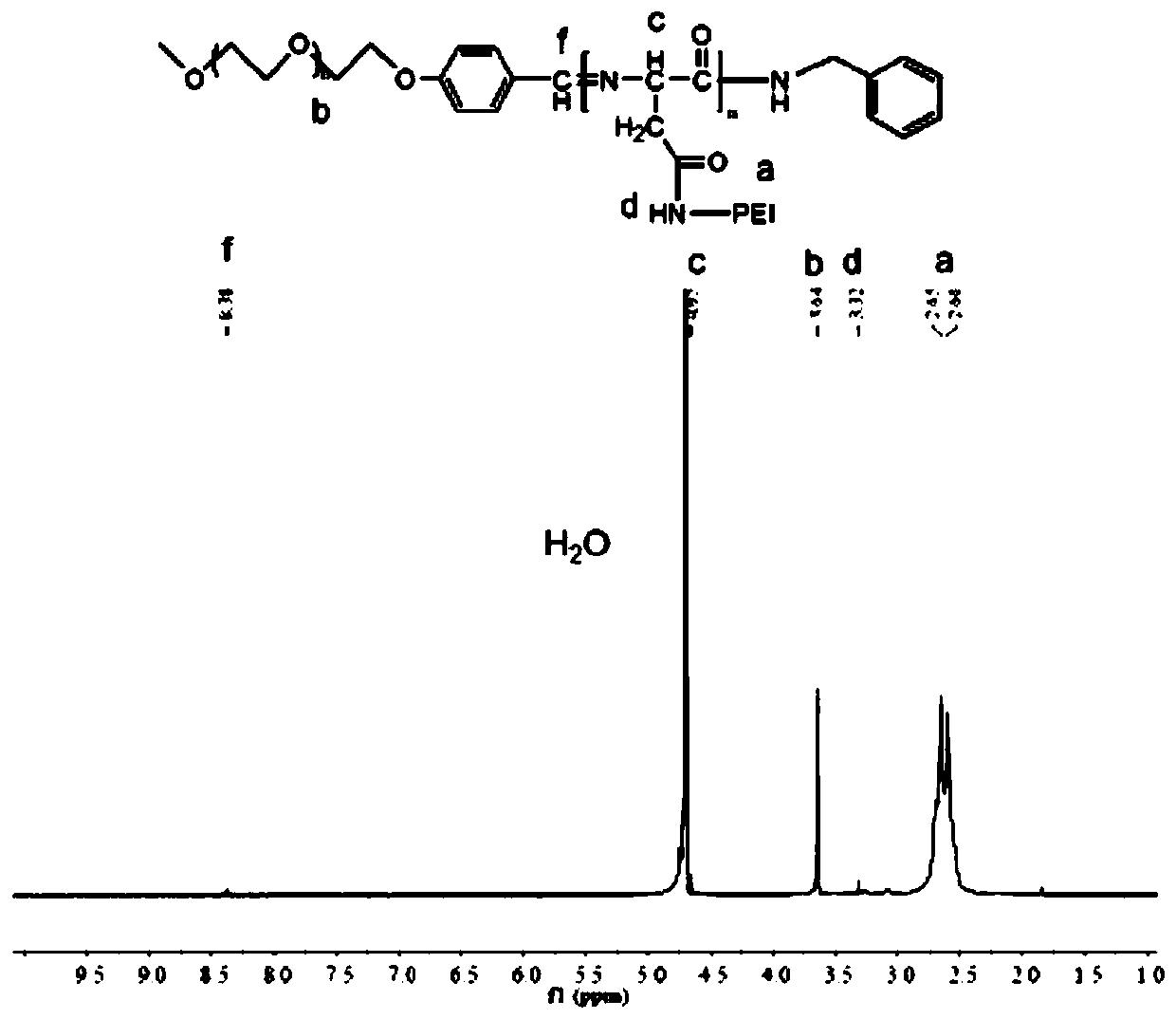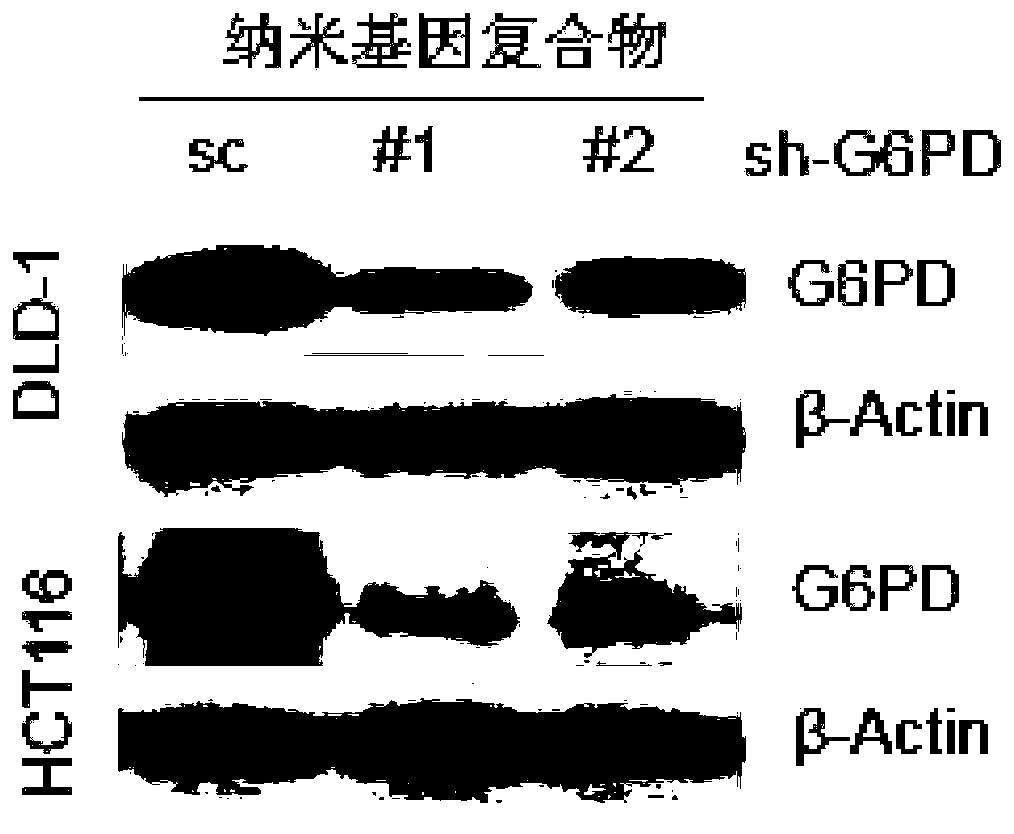Application of g6pd gene and its expression product in the treatment of colorectal cancer
A colorectal cancer and gene technology, applied in the field of gene therapy, can solve problems such as recurrence and metastasis, the effect of chemotherapy needs to be improved, and the mechanism of tumor drug resistance is complex, so as to prevent recurrence and metastasis, inhibit recurrence and metastasis, and prolong survival. Effect
- Summary
- Abstract
- Description
- Claims
- Application Information
AI Technical Summary
Problems solved by technology
Method used
Image
Examples
Embodiment 1
[0054] The preparation of embodiment 1 gene carrier
[0055] 1. Taking polyaspartic acid as the main body, using acid-sensitive phenylimine bonds to connect polyethylene glycol on the main chain, and introducing low-molecular-weight polyethyleneimine to amine the side chains, forming a new type of pH-sensitive Type-responsive polycationic gene carrier PEG-PAsp-PEI (PPP).
[0056] Specifically, the synthesis method is as follows:
[0057] (1) Using the Fuchs-Farthing method to synthesize N-carboxy-L-aspartic acid-benzyl ester-cyclic anhydride (BLA-NCA), using benzylamine as an initiator, ring-opening polymerization to obtain polybenzyl aspartate ;
[0058] (2) polyethylene glycol (PEG) reacts with p-carboxybenzaldehyde under the catalysis of catalyst, and synthesizes and obtains PEG-CHO;
[0059] (3) Then react polybenzyl aspartate with PEG-CHO to form an acid-sensitive structure of phenylimine, use low molecular weight polyethyleneimine for aminolysis, and synthesize the ge...
Embodiment 2
[0066] Preparation of embodiment 2 interference material (PPP / DNA nano-gene complex)
[0067] 1. Design G6PD-specific shRNA sequence
[0068] A specific interference sequence targeting the G6PD gene is designed and synthesized by a biological company.
[0069] The specific interference sequence is as follows:
[0070] shRNA-1 (shown as SEQ ID NO.1): GCCTTCCATCAGTCGGATA;
[0071] shRNA-2 (shown as SEQ ID NO. 2): CCTCATGGTGCTGAGATTT.
[0072] 2. Preparation of PPP / DNA nanogene complexes
[0073] (1) Cloning the above shRNA sequence (shRNA-1 or shRNA-2) into a vector to form plasmid DNA.
[0074] (2) Dissolve the PPP polymer and plasmid DNA in ultrapure water to obtain a mother solution with a concentration of 5mg / mL, and then dilute it with PBS buffer (pH 7.4, 10mM) to obtain a 1mg / mL PPP polymer solution and DNA solution; then according to the PPP / DNA N / P ratio of 30, mix the PPP polymer solution and DNA solution and incubate at room temperature for 30 minutes, and form PP...
Embodiment 3
[0075] In vitro cell transfection of embodiment 3 PPP / DNA nano gene complex
[0076] In this example, the PEG-PAsp-PEI (PPP) vector was used to deliver the interference sequence against the G6PD gene, and the colorectal cancer HCT116 and DLD-1 cells were transfected, and the effect on the expression of G6PD was analyzed by Western blotting.
[0077] 1. The specific method is as follows:
[0078] (1) HCT116 and DLD-1 colorectal cancer cells were divided into 4×10 cells per well 5 Each cell was seeded in a 6-well plate and cultured overnight in RPMI-1640 medium containing 10% FBS (v / v) to allow it to grow adherently.
[0079] (2) The original medium was removed, and while fresh medium was added, PPP / plasmid DNA nanocomplex containing shRNA and PPP / control plasmid DNA nanocomplex were added respectively, and incubated for 48 hours.
[0080] (3) Collect cells, add 500 μL RIPA protein lysate to lyse on ice for 15 min, then collect by centrifugation (13000 rpm, 15 min) and quantif...
PUM
 Login to View More
Login to View More Abstract
Description
Claims
Application Information
 Login to View More
Login to View More - R&D
- Intellectual Property
- Life Sciences
- Materials
- Tech Scout
- Unparalleled Data Quality
- Higher Quality Content
- 60% Fewer Hallucinations
Browse by: Latest US Patents, China's latest patents, Technical Efficacy Thesaurus, Application Domain, Technology Topic, Popular Technical Reports.
© 2025 PatSnap. All rights reserved.Legal|Privacy policy|Modern Slavery Act Transparency Statement|Sitemap|About US| Contact US: help@patsnap.com



